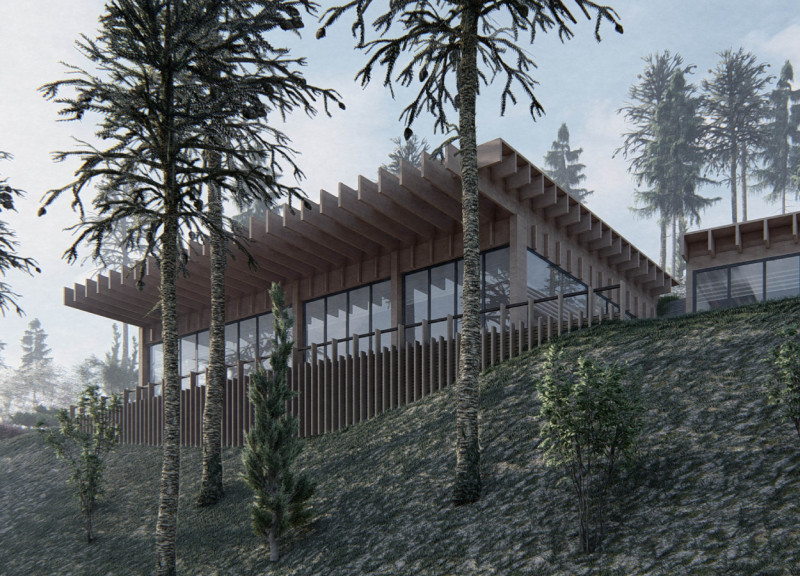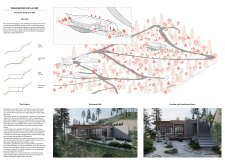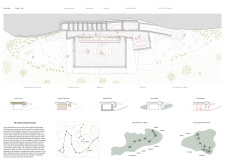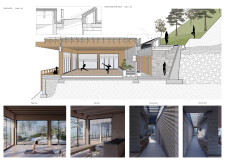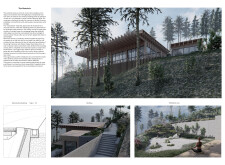5 key facts about this project
The primary function of the Yoga House revolves around providing a tranquil space designated for yoga, meditation, and holistic health activities. It is designed with an emphasis on creating a conducive atmosphere for relaxation and self-discovery. The architecture seamlessly integrates indoor and outdoor spaces, promoting an immersive experience where participants can engage with nature while practicing.
The project features a spatial organization that is methodically planned to cater to both individual and group activities. Central to the design is a spacious main area dedicated to yoga practice, which is nearly half of the usable space. This area is intentionally oriented with large floor-to-ceiling windows that welcome natural light and frame panoramic views of the scenic landscape. This openness not only enriches the experience of practice but also reinforces a connection to the natural world.
In addition to the main yoga area, the design incorporates essential support facilities. These spaces include changing rooms, restrooms, and showers that have been planned to ensure guest comfort and enhance functionality. The careful consideration of service areas reflects a thorough understanding of user needs, ensuring that visitors can fully engage with the program without distractions.
A particularly distinctive element of the Yoga House is the incorporation of two Zen gardens, known as "Ursa Major" and "Ursa Minor." Designed to evoke tranquility, these garden spaces contribute to the overall ambiance and serve as additional areas for meditation and relaxation. The gardens are thoughtfully landscaped to foster mindfulness and reflection, inviting users to engage with the elements and the surrounding environment.
The project exhibits unique architectural approaches that emphasize both materiality and sustainability. The primary structural material used is concrete, which provides durability while symbolically "rooting" the structure in the earth. This is complemented by the use of wood, chosen for its warmth and aesthetic qualities, which serves to create a lightweight, organic feel that engages with the sky. Glass elements are strategically placed throughout the design to maximize daylight and enhance visual connections with the outdoors, allowing occupants to feel the presence of nature from within.
Sustainability also plays a fundamental role in the architecture of the Yoga House. The materials have been selected not only for their performance but also for their ability to maintain balance with the site. This approach reflects a commitment to environmental responsibility, promoting an architecture that can evolve alongside nature with minimal ecological impact.
As one explores the Yoga House, the design encourages a fluid movement through various spaces, enhancing the sensory experience of the journey. Elevations across the site create diverse sightlines, helping visitors appreciate the changing relationships between the building and the surrounding landscape. The rooftop area, designed for relaxation or additional meditation practices, serves as an elevated vantage point for experiencing the natural beauty that envelops the site.
In summary, the Yoga House on a Cliff exemplifies a sophisticated approach to architectural design that is deeply rooted in the pursuit of well-being. By harmonizing indoor and outdoor spaces alongside thoughtful material choices and sustainable practices, this project offers a compelling retreat for yoga practitioners and nature enthusiasts alike. To gain a deeper understanding of this project, readers are encouraged to explore the architectural plans, sections, designs, and ideas presented in detail. Such exploration will provide further insights into the nuances of this harmonious architectural endeavor.


